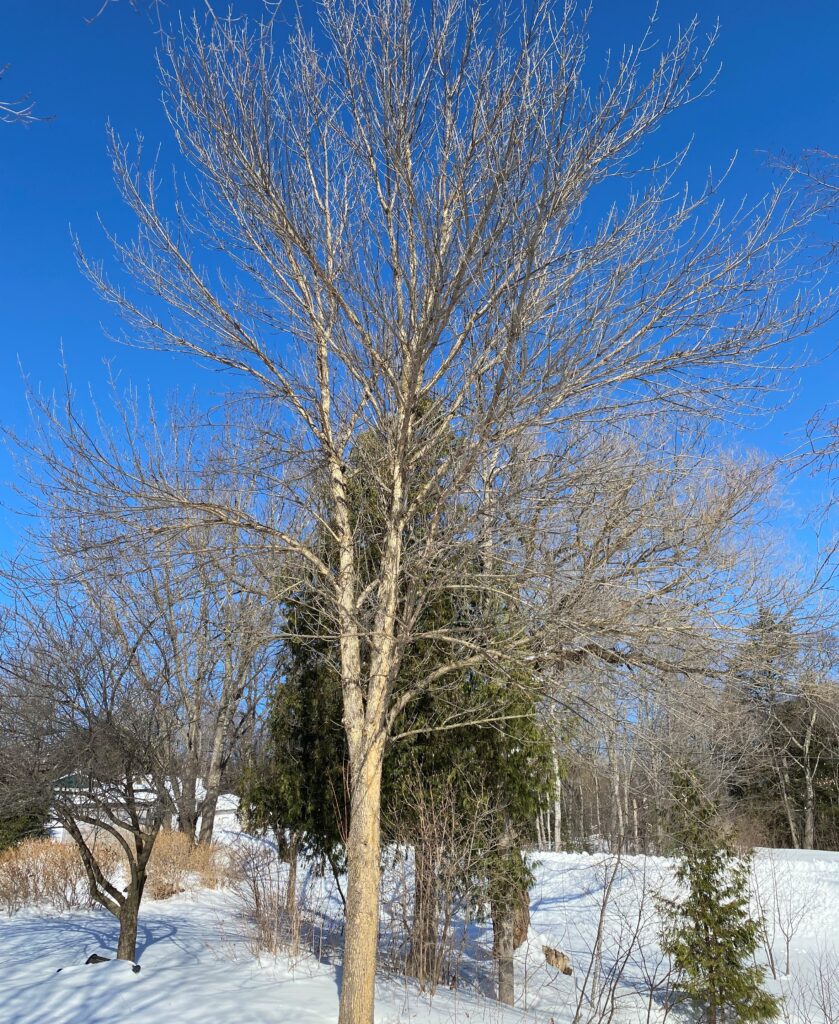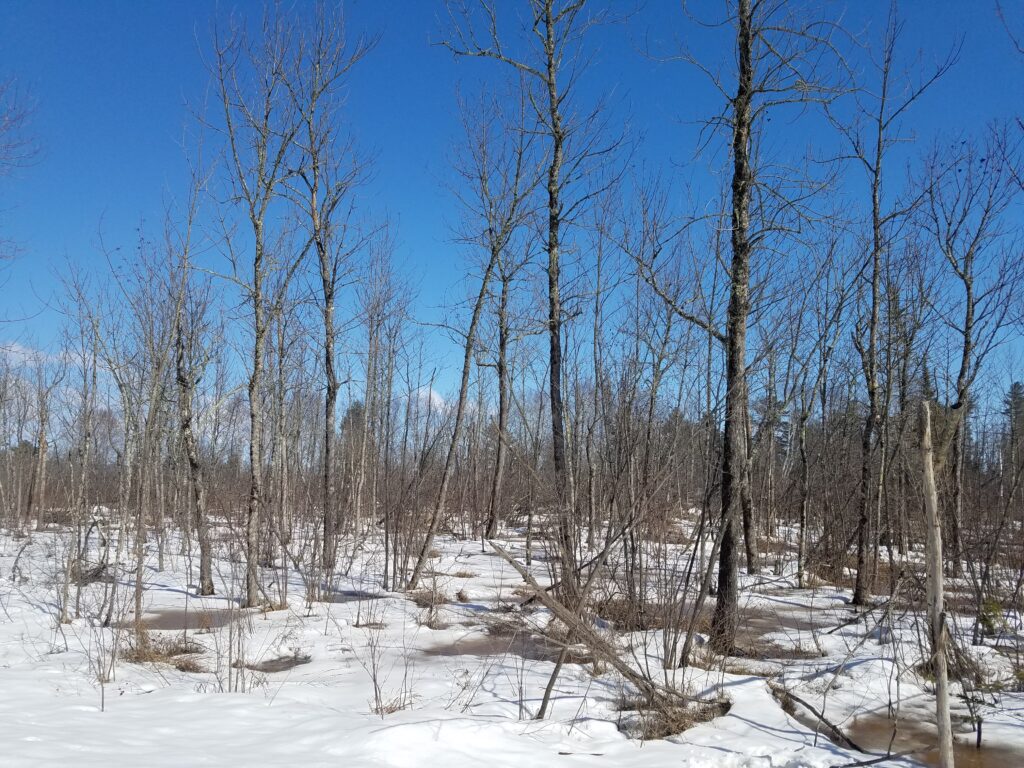By Paul Cigan, DNR Forest Health Specialist
Paul.Cigan@wisconsin.gov or 715-416-4920
Emerald ash borer (EAB) has been discovered in Bayfield County for the first time in both the city of Bayfield and Bayview township to the south. This marks the 63rd out of Wisconsin’s 72 counties to have an EAB discovery since its initial detection in 2008.

Figure 1: First known infested ash tree in Bayfield County with characteristic woodpecker damage (i.e., flecking).
Photo: Wisconsin DNR
Several white ash trees (Fig 1.) were observed in and around a roadside park in the city of Bayfield, and larval specimens were subsequently lab-confirmed. In Bayview, a black ash swamp had several infested black ash (Fig 2).
After introduction, EAB populations remain low for at least several years as most larvae in newly infested, healthy ash require two years to complete their life cycle. The abundance of healthy ash at each site suggests EAB populations have remained low since their introduction at least three years ago. However, EAB will kill ash more quickly as beetle numbers mount and more larvae transform from egg to adult in a single year. Unfortunately, many ash in the area are expected to die within four to seven years based on detection-to-impact timeframes observed from the Superior and Duluth area and research conducted in midwestern states.
These detections are 35 miles from the nearest known EAB infestation and are in a prominent tourist area, underscoring the importance of keeping firewood logs and cutting firewood local. Firewood transport is likely responsible for this long-distance jump in the pest’s known distribution.
This detection also reminds us that EAB will continue to spread north and is already more widespread than our maps and survey efforts can show. Being able to recognize and report EAB signs and symptoms, such as woodpecker flecking (Fig 1.), can help with early detection and spur local action through forest silviculture, yard tree insecticide treatments or ash species replacement before significant impacts occur.
Woodpecker flecking is a particularly useful identification symptom but tends to be less reliable for infested black ash, so knowing the range of signs and symptoms is most beneficial.
To see where EAB has yet to be found in Wisconsin or to report new municipal or township detections, visit the interactive Wisconsin EAB detections map and contact your local forest health specialist directly if you encounter a suspicious tree.
For ash forest management, become familiar with the EAB Silviculture Guidelines when working with landowners and drafting timber management plans and sales. For more information on all things EAB in Wisconsin, refer to the DNR’s EAB webpage.

